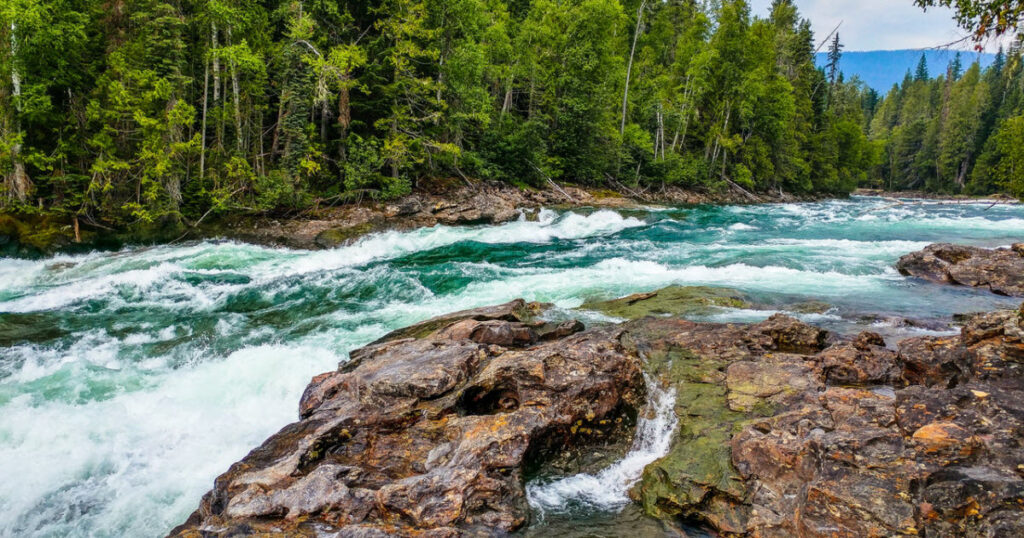Before going paddling on whitewater rapids, it is essential that you have a clear idea of both the strength and current of the river. So that you can know what to expect, whitewater rapids are all rated on a simplified scale from 1 (easiest) to 6 (pray you survive). This international scale of river difficulty grades the rapids classes according to difficulty and danger.
It’s imperative that before you go white water rafting, canoeing, or kayaking that you understand what safety gear to wear, are a strong and experienced paddler, and have gained experience in turbulent waters. In today’s article I’ll explain each of the white water rapids classes, share photos of the typical water conditions of each rapids class, and describe what sort of paddler may (or may not) want to attempt each type of whitewater.
White Water Classes as a Guideline
It’s important to remember that the rating system is a comprehensive guideline, but not a precise measurement. As with any scale, there is room for interpretation.
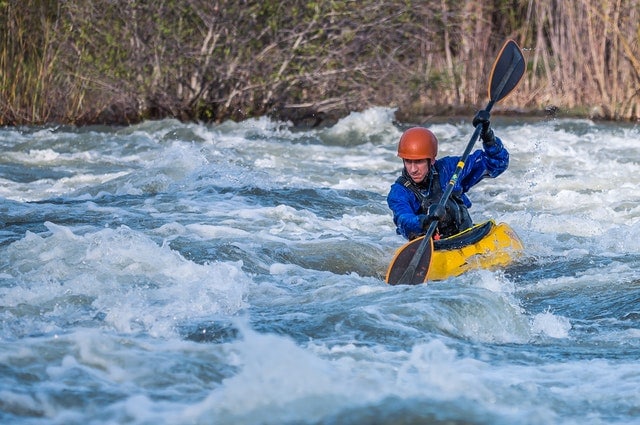
While experts can agree on grouping certain rapids in a particular classification, there will always be some discrepancy. Some experienced paddles may put a particular river within class II, while others would place it in class III. In general, use the classification system as an informative guide.
Always bare in mind that the rating refers to difficulty and potential danger, and this does not correspond to how thrilling or fun it is to paddle there. Experienced paddlers may still find a class III rapid a lot more enjoyable than a class V one.
White Water Rapid Classes Explained
Below is a description of each white water rapid classification. There are images and more detailed descriptions of each rapids class lower on the page.
| Rapids Class | Description of White Water Conditions |
| Class 1-2 | For novices, very little to no danger. Suitable for beginners. |
| Class 3 | For intermediate paddlers. Unpredictable waves and strong currents can cause difficulties. |
| Class 4 | Advanced level required. Powerful currents and turbulent waves. |
| Class 5 | For experts and highly experienced paddlers only. Potentially extremely dangerous, and there is a great exposure to risk and injury. |
| Class 6 | Extreme rapids, rarely attempted and maximally dangerous. |
Class I-II Rapids
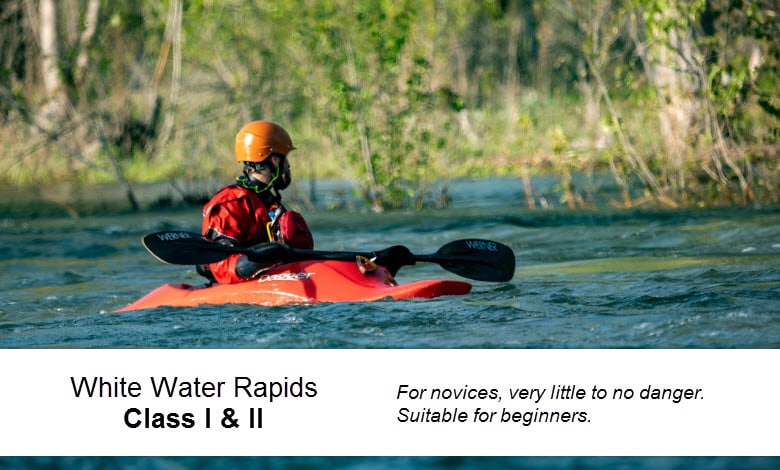
Class I and II both refer to easily maneuverable, wide, unobstructed channels. Each of these rapids classes is considered safe entry-level paddling for most people who are comfortable in their vessel.
In class I, waters will be still and calm with very little congestion.
In Class II, there may be some rocks and even small waves, but they can easily be avoided, even by in-experienced paddlers. When swimming, there is very little risk of injury or a need for assistance. Rapids which are the highest level of difficulty within this classification are referred to as ‘Class II+’.
Class III Rapids
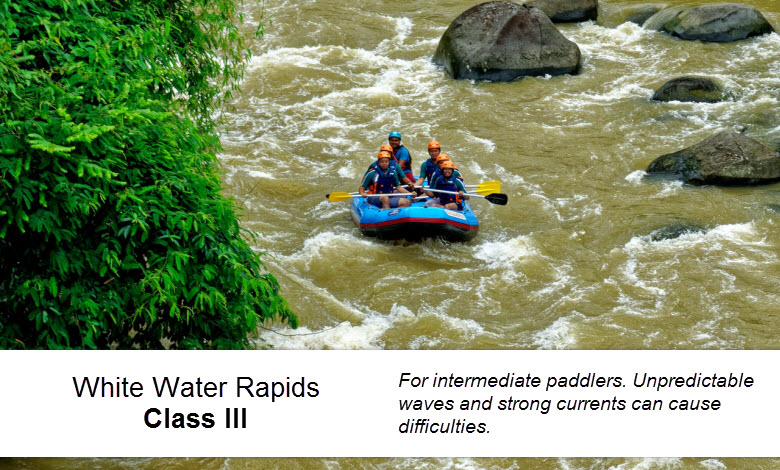
Class III rapids have medium-sized, changeable waves which can be problematic to avoid and can easily overwhelm a canoe or kayak. Unlike the level 1 and 2 rapids classes, class 3 rapids require a certain level of experience to maneuver in these fast currents, and there may be larger waves which will take good levels of instinct and boat control to avoid.
There are potentially eddies and very strong currents, especially in large rivers so it is recommended that less inexperienced paddlers come accompanied.
When swimming, injury rarely occurs and rescue is not usually required. Again, the difficulty level within the class rating is referred to as III- or III+.
Class IV Rapids
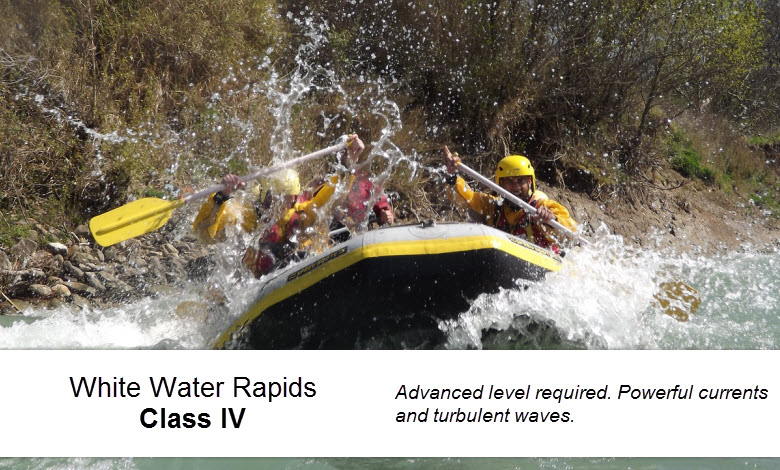
The intensity and forcefulness of class IV rapids require a high level of competency to be safely handled.
In particularly wide rivers, there will likely be large, encumbering waves and tight passages which need an expert hand to maneuver through. Whirlpools are also commonplace, and advanced knowledge of boat navigation is recommended.
The risk of injury is moderate to high, and the strength of rapids may inhibit rescues. It is recommended that rescue equipment is taken on the venture. The higher and lower end of difficulty is communicated with -,+, i.e. ‘class IV-‘ or ‘class IV’.
Class V Rapids
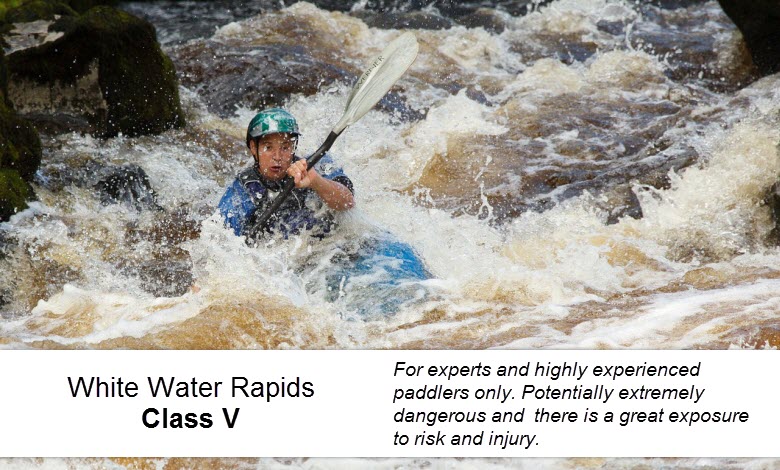
Class V rated rapids are typically very violent, expansive and feature a number of obstructions. There will likely be steep drops, large, unpredictable waves and many narrow and congested routes which require expert handling to navigate around.
Unlike some of the easier rapids classes I’ve discussed already, Class 5 rapids will be extremely demanding and they will require a high level of fitness to be managed.
Eddies and whirlpools are highly likely, and will be very difficult to avoid. Swimming is very dangerous and due to the turbulent conditions, rescue is very difficult even for experienced rescuers. When venturing on class 5 rapids, you will need the full range of rescue equipment, and instead of a wet exit, you should be able to perform an eskimo roll, where you right your kayak if you flip.
It is recommended that all paddlers have rescue training and experience.
Due to the wide range of difficulty potential within Class V, it is sub-sectioned into multiple different classes: 5.0, 5.1, 5.2 etc. This is ascending difficulty, 5.9 being the most dangerous.
Class VI Rapids
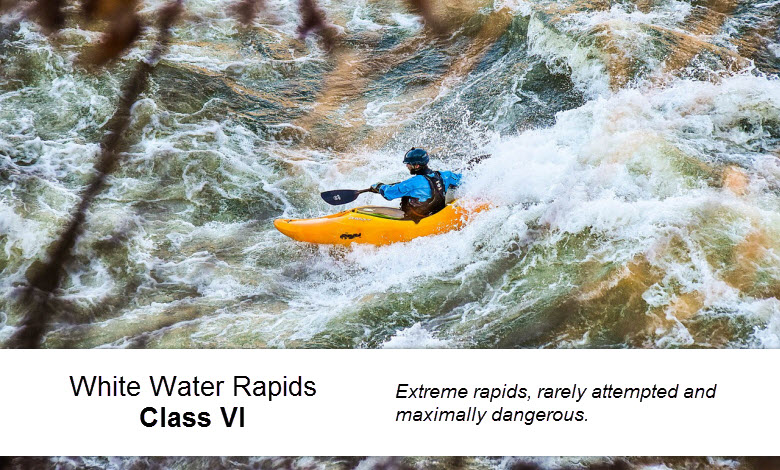
Class VI rapids are very rarely approached, even by expert paddlers. The level of difficulty and danger is so high that the risk of injury and even death is correspondingly likely. Rescue, even for a team of experts, is very tricky and often impossible.
Only a full team of highly experienced paddlers with elevated fitness levels and rescue training can consider venturing out onto these rapids. Once a class VI rapid has been visited several times with success, it may be changed to a Class 5.x rating.
Recommended Safety Gear for Whitewater
If you’re planning venturing out to class III+ white water rapids, then you will need to have a full set of safety equipment and some knowledge of how it works.
Here’s a short guide to the essential safety gear you should have with you when out on the water.
Personal Flotation Device (PFD)
While a lifejacket is designed to keep you afloat on your back and is recommended for non-swimmers, a PFD is designed with agility and motion in mind so that you can swim freely while wearing it.
Even if you’re a strong swimmer, a PFD is essential to keeping you safe. You cannot predict when you might encounter unruly waves and currents, and your fatigue levels will be heightened from paddling.
Helmet
A helmet is another essential item of safety gear. This will keep your head protected form falling rocks or branches, or any collisions you may encounter.
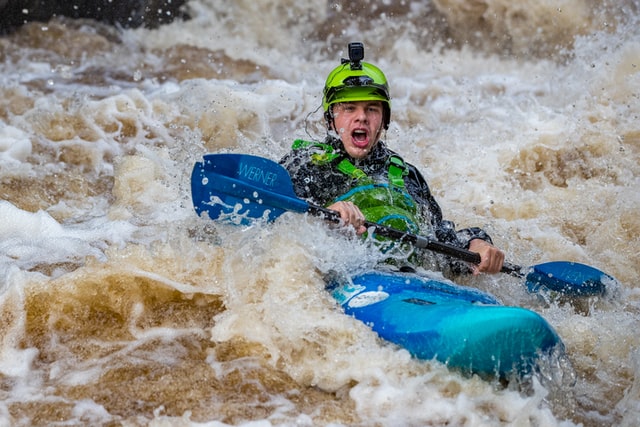
Make sure you have a whitewater specific helmet so you know that is specialised for the sport at hand.
Wetsuit
Keeping your core temperature steady is an essential safety requirement of paddling. Made from neoprene, wetsuits insulate the body by trapping water between the material and your skin. They additionally provide greater buoyancy on the water.
Footwear
Having the correct footwear is also an important safety factor. Neoprene wet shoes will keep your feet warm and are provide flexibility for swimming. Look for shoes with adequate protection underneath in case you tread on rocks or debris which could harm the soles of your feet.
Paddle Floats
Paddle floats are designed to aid self-rescue. They are either inflatable or built with foam.
To use, place the float onto one blade of the paddle, then perch the other on the kayak. You can then use the the suspended paddle to hoist yourself back up onto the kayak.
Safety Whistle
A safety whistle can travel farther than voice, so is an effective way of communicating danger or signalling that you need assistance. I recommend that you attach your safety whistle to your PFD for easy access.
Throw Bag
A throw bad contains a fluorescent, durable rope which can be thrown to swimmers and aid their safe return to the kayak. They come in different strengths, lengths and diameters depending on the nature of the kayak venture. Some are even strong enough to hoist whole kayaks free.
Make Good Choices When Attempting Rapids Classes of Any Level
Before venturing out on white water rapids and pushing yourself to the limit, remember to put safety first.
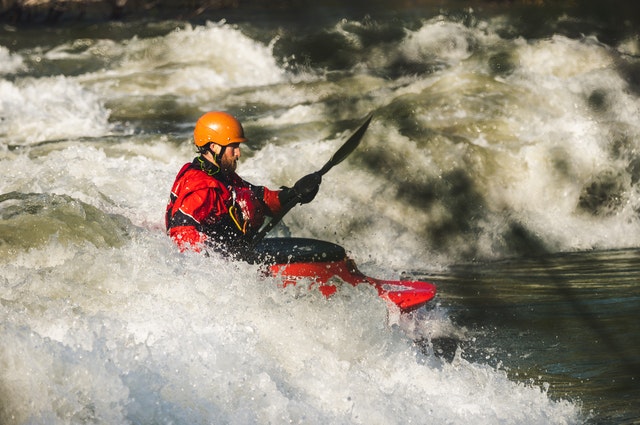
Make sure you’re aware of all the different rapid classifications, and make an informed decision on which class to approach based on your experience level and personal fitness. Bare in mind too that having the correct safety gear can be the difference between an enjoyable challenge and a dangerous expedition.

